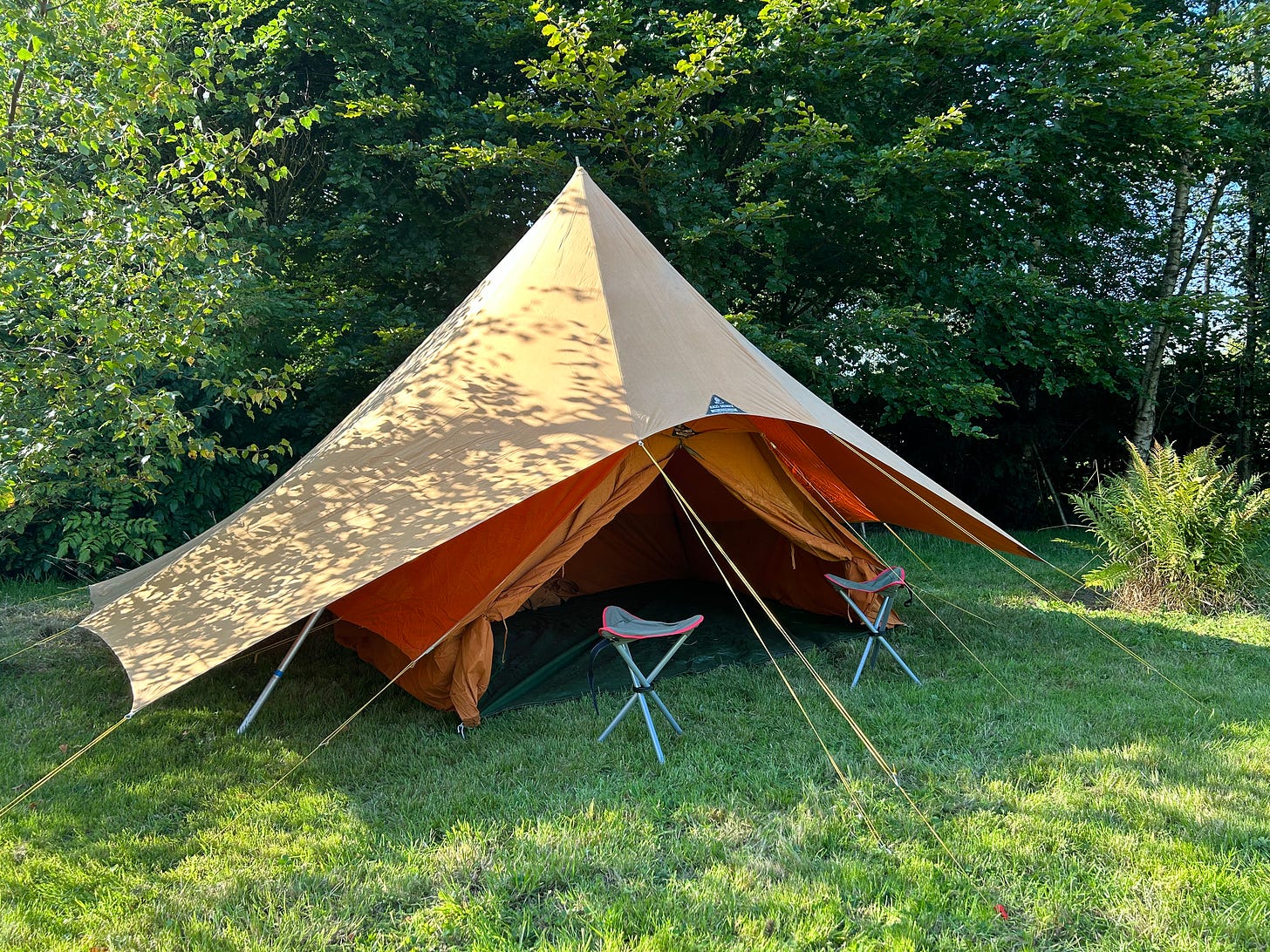Designing for Emotional Durability
Repurposed and Updated Regen Notes / ZR session folded into an Ecosystem approach
Emotional Durability ...'because it moves the head and the heart' "could save the planet"
Following recent comments to a LinkedIn post around Emotional Durability and Beauty, I am repurposing this Regen/Notes post from 2022 (Design and Build like the Earth depends upon it) …

Back in 2022 Zoom Regenerative #44 hosted Rachel Sheila Khan on the subject of emotional durability. Following the principles that everything is interconnected and interdependent, we were struck by the commonalities between her subject of emotional durability in textile & clothing manufacture and the built environment.
Showing us a dress from the 1950s, Rachel explained how material was left in a garment, that seam margins were much more generous than today, and that allowed that garment to follow the wearer along their life journey and perhaps allowed it to be passed on and be useful for another owner to create more memories and appear in more special photographs! In short - built-in adaptability - clothes that trigger emotions and hold a place in our hearts.
Garment manufacture today, however, has no such resilience or adaptability built in. Narrow cost margins dictate no generous hem or seam lengths that fuel and perpetuate the culture of fast fashion - once a garment no longer fits or is no longer a la mode, it is discarded - and with it, the opportunity to own and wear it for decades, and amass memories, is lost.
Rachel’s call to action is for us to unleash our inner creativity - to have regenerator stations where garments can be reworked, mended and embellished - how much more vibrant that would be!
So, how might we recognise emotional durability in the built environment?
In his book ‘Emotionally Durable Design: Objects, Experiences and Empathy’, Jonathan Chapman explores how we retain an interest in things only when they continue, over time, to remain meaningful and can adapt to our changing desires and values.
Today’s business model, which strives to create maximum profit from producing and selling more and more products, does not encourage consumers to keep and care for things. The recent legislation around planned obsolescence is beginning to address that, but what of human desire for the next best thing once we resent and grow tired of the worn and faded?
Chapman states: ‘We are consumers of meaning not matter’ and what greater meaning and emotions can be held but in a home. A home is often intrinsically tied to our life journey - the starter home for a young couple that welcomes a child and begins to bear the hallmarks of raising children and pets: the growth rings as a child grows, marked through the paint in a door frame. The extension was built to house and welcome the expanding family. Individuality is imposed upon it by choosing the colours of windows and renders. Memories are attached to each bump and patch job.
Yet today’s homes suffer the same way as today’s garments - narrow margins. The Lifetime Homes standards were replaced in 2015 by an optional building regulation standard entitled ‘accessible and adaptable dwellings’ - keyword: optional. Social housing providers predominantly incorporated Lifetime Homes standards as resilience and longevity are key for social landlords, simple things such as designing a dwelling for the potential to retrofit a through floor lift or to adapt a downstairs room into a bedroom, would ensure a home could grow and adapt throughout its life and through multiple generations of a family.
With frameworks such as the Living Building Challenge adaptability and resilience are designed in. The building and construction industries determine, by and large, how residents interpret their surroundings and the built environment. As such, it is vital to re-engineer our cities and towns to correspond more directly to the natural landscapes they inhabit. By reconfiguring how we think of such spaces, architects, engineers, planners, and contractors can create buildings that generate their energy, and wean buildings off the fossil fuel economy.’ and with the current energy and inflation challenges, never have such programmes been more relevant and timely.
And as we saw in Lloyd Alter’s TreeHugger article what can happen when the emotional bond breaks, as in the case of the Cumbernauld Shopping Center? (This Brutalist Classic in Scotland Is Getting Demolished Instead of Reimagined - “landmarks, not landfill”)
It is Personal
We all can relate to examples of emotional durability, and for me, it is most evident in outdoor wear, especially clothing that has a rich narrative 'embedded, in the manufacturer ethos that resonates with my values, and in my achievements or memories attached to the item. I am thinking of Patagonia and many others here. The Blacks heavy canvas tent used in scouting over 5 decades ago is now used as a play tent, each time surfacing memories and renewed care and love, The rucksacks and jackets that accompanied me to the highest of peaks in the Alps or Dolomites, and are still loved, in use to this day.
Design for Emotional Durability
A Six Point EcoSystem.
Design for emotional durability means creating and forging lasting and meaningful connections with those who live, work, learn and play in our buildings, ensuring relevance and value that lasts over time. It is an approach to counteract the disposable mindset in architecture, planning and manufacture by emphasising elements that cultivate deep attachment and meaning.
Please reach out to discuss further and for support and guidance on regenerative approaches such as Designing for Emotional Durability.
Read on for emotional durability ecosystem components and why I have suggested this is an ‘ecosystem’ rather than a framework or standard ….



